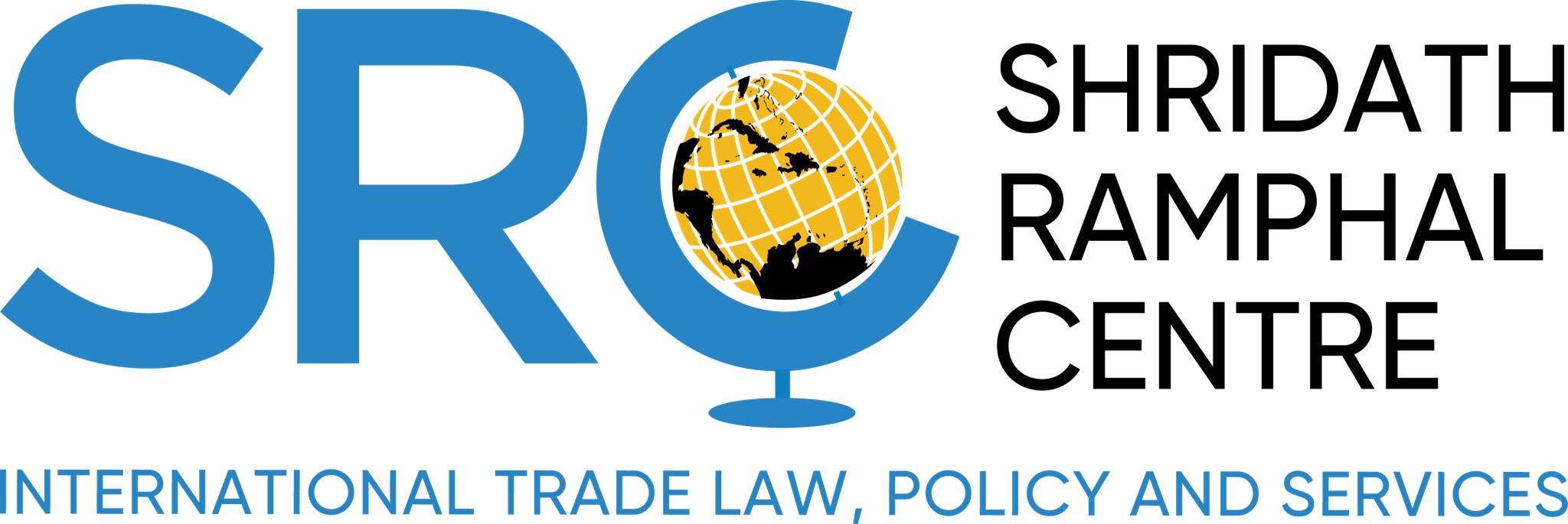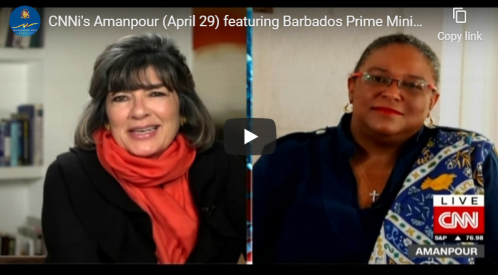By Jason Cotton, Jan Yves Remy and Alicia Nicholls
INTRODUCTION
All of Barbados sat glued to their television sets this Wednesday as CNN’s Christiane Amanpour interviewed Prime Minister, the Honourable Mia Amor Mottley. And she did not disappoint. She used the world stage to make a clarion call for global leadership on the issue of vulnerability and revived the concept of a Vulnerability Index for validating small States’ claim for special treatment in international relations.
As the Prime Minister noted, vulnerability has been the subject of international trade literature for years, and the Commonwealth Secretariat has pioneered work on vulnerability. More recently, we at the University of the West Indies’ Shridath Ramphal Centre (SRC) in Barbados have teamed up with a Caribbean economist to develop a “Trade Vulnerability Index (TVI)” that aims to detect, measure and ultimately quantify the degree of trade vulnerability of countries.
As we argue below, the global health pandemic of COVID-19 gives credibility to – and ultimately validates – the relationship we have explored between vulnerability and trade using our TVI. It also justifies and directs a response by the international community to COVID-19 that prioritizes the allocation of global resources to the most vulnerable.
THE SRC TRADE VULNERABILITY INDEX IN A NUTSHELL
We first proposed the TVI as an objective basis for guiding country eligibility for preferential treatment – Special and Differential Treatment (S&DT) – at the World Trade Organization (WTO). We wanted a framework that would steer the focus away from income-based criteria for assessing development – like GDP- or GNI-per capita – toward structural characteristics of an economy After careful review of the literature, we came up with indicative “proxy indicators” to measure the structural, environmental and institutional vulnerabilities of countries. These indicators include: export concentration, concentration of export destination, trade openness, susceptibility to trade shocks, dependence on strategic imports like food and fuel, reliance on external finance, market share of global trade, remoteness, limited economic diversification, small size, susceptibility to natural hazards and climate change, market inflexibility and weak political, social and environmental governance. Importantly, while the TVI contemplates that most countries which fall under the “vulnerable” category would be small economies, it is not preclusive.
COVID-19 EXPOSES CARIBBEAN VULNERABILITY
The Caribbean region is comprised of economies that are small, debt-ridden, export dependent, disaster prone, and reliant on external finance. With these characteristics, it is little surprise that COVID-19 has further exposed the Caribbean’s vulnerability. Take, for example, the TVI proxies of export concentration and limited diversification. For the majority of islands, tourism is the main economic activity, representing approximately 45 per cent of GDP, contributing an average of 29,208 persons to employment (per island); and serving as a major source of foreign exchange with the main tourism source markets being the United States, United Kingdom and Canada. Tourism will experience a sharp economic decline due to closed borders, grounded flights, interrupted cruises, shut hotels and other accommodations, supply disruptions and social distancing and state of emergency measures (domestically and abroad).
Take another indicator: dependence on strategic imports. For many years, leaders of the Caribbean Community (CARICOM) have lamented the region’s increasing dependence on critical imports such as food, fuel, machinery and transport and other manufactured goods. With COVID-19, this dependence has become debilitating with the region scrambling to ensure that its access to critical produce, health related goods and equipment such as personal protective equipment, medical supplies and ventilators is secured.
The COVID-19 pandemic has also served as a stark reminder of our susceptibility to disasters and exogenous shocks. These islands are already feeling the adverse impacts of climate change, including more frequent droughts and increasingly ferocious weather systems. With the hurricane season quickly approaching, concerns are heightening, but hopefully we will be spared another natural disaster onslaught this year.
THE LESSONS TO LEARN ABOUT VULNERABILITY
COVID-19 has validated our belief that inherent characteristics of certain countries, like those of the Caribbean, predispose them to less favourable outcomes in severe crises like this one: high concentration of exports (and particularly tourism services); high dependence on other nations for their imports of food, fuel and medical equipment and services; a small proportion of global trade and as such may not be prioritized given scarcity of supply; deep fiscal constraints and limited access to capital markets – which is often connected with weak governance and institutions; heavy reliance on external trade and foreign investment to overcome their inherent resource limitations; market rigidities which can restrict the economy’s ability to recover after being affected by the shock and have higher levels of poverty and inequality.
But beyond just inputs for our Index, COVID-19 allows us to reflect on the very concept of vulnerability, as a more human and lived experience. First, it shows that the potential causes of vulnerability are not static. Health pandemics, like climate change, which now feature prominently in discussions, were hardly, if at all, on global radars 15-20 years ago. Secondly, the globalization and interconnectedness of the world in economic, social and environmental dimensions demonstrates how – to varying degrees – we are all vulnerable to each other. Thirdly, while we typically understand this vulnerable group to comprise women, children, the elderly, disabled, the poor, marginalized and displaced, we may now include as well those without health care or health insurance, and those facing job losses and economic hardship which could result in mortgage and rental arrears and evictions.
CONCLUSION
In its recent Ministerial Statement, the G20 expressed “concern” about the impact of COVID-19 on vulnerable developing and least developed countries, and notably in Africa and small island states.
While a good start, as Honourable Mia Amor Mottley has intimated, “concern” is not enough. The world must realize that to claim vulnerability is not simply a plaintive cry of the weak, but an expression of a real condition. Our Trade Vulnerability Index can help provide a sound and evidential basis for decisions taken by international institutions to allocate limited resources to the most vulnerable.
Jan Yves Remy and Alicia Nicholls work at the Shridath Ramphal Centre for International Trade Law, Policy and Services, at the University of the West Indies’ Cave Hill Campus (Barbados). J. Jason Cotton is an Economist at the Caribbean Development Bank.
For more information about the SRC’s TVI, see our working paper at: https://shridathramphalcentre.com/wp-content/uploads/2019/10/Using-Trade-Vulnerability-Index-for-Determining-WTO-Developing-Country-States_WorkingPaper_Sept_2019-3.pdf.


